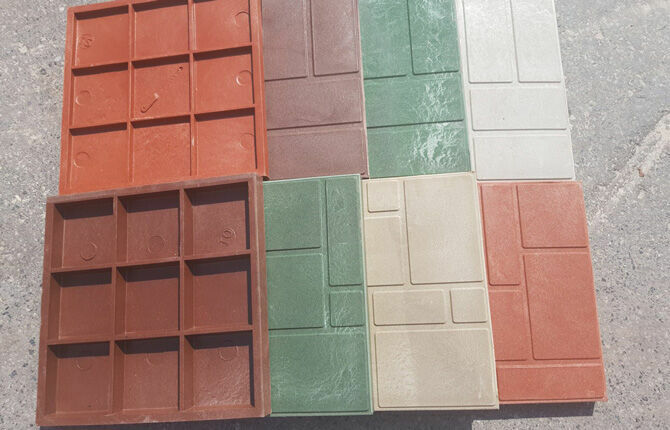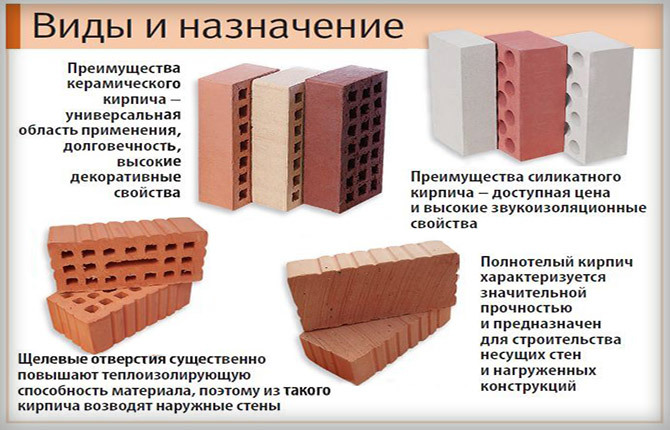Owners of private homes insulated pipes of the heating system is often considered a waste of money. But such measures - is a recipe for significant heat energy savings.
Reduce the amount in the accounts from energy and fuel for the boiler is required to block the costs of insulation. We only need to correctly pick a heater for heating the pipes, so he served a little longer without losing its characteristics.
The content of the article:
- Why it is necessary to insulate heating pipes
- Overview of heaters on the market today
- View # 1: fiber wool
- View # 2: foamed polymers
- View # 3: composite materials
- View # 4: paint and sprayed foam
- Which option is better insulation
- Useful videos on the topic
Why it is necessary to insulate heating pipes
Typically, the owners of cottages only produce insulation of the heating pipes that are outside of the home. There is heat loss and most likely ambitious. No wonder all city heating line so carefully insulated.
Energy of the money had already learned to count. However, the heating pipes in the basement or boiler room should also insulate. Heat such non-residential premises in the house - it's wasting money.

There are five good reasons to hide the heating pipes heat insulator:
- Protecting the coolant from freezing.
- Prevention of condensate formation.
- Reducing heat loss.
- The extension of the "life" of the boiler equipment and pipelines.
- Possibility of stacking outer portions of the heating system in the ground above its freezing point.
Insulated pipes in the basement, the attic, in the boiler room and outdoor areas. Mount the heater on the risers inside the house in the living room is not worth it. If this is done, then the heat will still fall in the room, but through the radiator. No sense in such actions. The money spent on the insulator will, and he will make sense from zero.
When driving on warmed coolant conduits it does not waste thermal energy in vain. All the heat is used for heating the necessary areas. In this case the boiler and pump equipment in the boiler does not have to operate at maximum capacity to maintain a comfortable room temperature.

Another couple of disadvantages of heating pipes without insulation - this condensation and freezing. In operation, when the system circulates heated water, problems with its freezing inside and outside the condensation does not occur. But in case of accidents on the heating system pipes begin to "get wet" and then freeze. Heat-insulating material in such a situation gives a few extra hours, during which the coolant and let cool down, but not so fast.
In general, heat insulation of pipes made:
- the laying of communications outdoor heating systems;
- on pipe sections disposed in unheated subfield and attics;
- the installation of heating and tap them on the risers in the basements of apartment buildings.
Insulated pipes - it is warm the batteries while reducing energy costs. It is better to spend money on insulation materials, rather than pay huge heating bills. Always make more effective insulation than is spent on fuel for the stove or boiler.
Overview of heaters on the market today
heating pipes All insulation materials are divided into:
- roll;
- cylindrical with a slit and without;
- semi-cylindrical ( "shells").
First sold in rolls of pipe wrapped. The latter are of the insulation cylinder with an empty core, where the tubular article is inserted. Third - it is two halves in the form of semi-cylinders, which are applied to the pipeline from above and below, thereby forming a heat-insulating protection from all sides.
Round option is good in that it can be mounted on pipes of any diameter. Cylindrical materials stacked on pipelines only a particular size. If you perform the installation of the product to a larger cross section than they are designed, the gap is formed in the insulating layer. The effectiveness of insulation in this case, will fall sharply.
Depending on the type of insulation "cylinders" and "shells" are soft or hard. In the first case, the insulator can be bent for mounting on rotation of the pipeline, and the second portions such heating systems remain without the insulation coating.
View # 1: fiber wool
Glass wool and basalt mineral wool rolls - classic insulation. These materials are cheap, easy to install and have decent insulating properties. Their main drawback - it is a high absorbability. They are absorbent, immediately losing all their properties for insulating.

Least prone to moisture absorption rock (basalt) of mineral wool. Fiberglass her in this slightly inferior. There are still cinder option, but from him it is better to refuse. This type of mineral wool is hygroscopic highest. For thermal insulation of pipelines of heating, water supply and sanitation can not be used.
Mounting mineral wool pipe produced overlapped with subsequent bonding of insulation on top of steel belt or wire made of stainless steel. Thermal conductivity are both recommended for heating systems are similar variants of mineral wool. This figure them ranges from 0,035-0,044 W / (m * 0C).
When using mineral wool must be remembered that she sits down and compacted with time. As a result, the efficiency of its thermal insulation is reduced. It should immediately lay a thicker layer, so as not to return to their initial positions after a couple of years and start anew on pipes laid insulation.
It serves a glass and basalt rockwool about 10 years. But this is only on the condition that it will not get wet and exposed to mechanical stress.
View # 2: foamed polymers
This category Thermal insulation for pipes include materials based on:
- polyethylene;
- styrofoam (foam);
- polyurethane;
- rubber.
The first of these proposed a heat insulator stores a web material from several polyethylene layers with air bubbles between them, and also in the form of expanded porous liners polyethylene. The thermal conductivity of the insulation at - around 0,035 W / (m * 0C). He is not afraid of moisture and remains flexible even at strong frosts.

Polystyrene foam heat insulator for heating pipelines is produced as two half-cylinders-shells. To ensure that no gaps and cold bridges, many manufacturers produce them with locks "tongue and groove" in length. For large diameter pipe segments can be two, three or four. The thermal conductivity in polystyrene - 0,037-0,042 W / (m * 0 C).
Polyurethane foam density and other characteristics similar to the foamed polystyrene equivalent. Only it is slightly larger than the last of insulation quality. The thermal conductivity at this insulation - 0.035 W / (m * 0C). That it is most often used for the insulation of large pipes at the plants. Such finished products used in the laying of heating inside the quarters and for mounting the tap of the common network to cottages.
Foam insulation for pipelines intrahouse produced in the form of hard shells with an outer layer of sheet steel. This polymer is afraid to ultraviolet radiation, he needs protection from the light.
Foamed rubber repeats the most plastic analog characteristics. However, he has a greater range of operating temperatures (from -190 to + 1750S) and it costs a lot more. It is most often used in thermal insulation of ventilation systems and refrigerant pipes, where its properties are more in demand.
View # 3: composite materials
Mineral wool is prone to the accumulation of moisture and loss of thermal insulating properties. Polymer insulation fragile and afraid of fire, ideally they need additional external protection. To obtain a thermal insulation with the desired characteristics, many manufacturers combine them with each other and with other materials.

By the combined heat insulation material for pipes include:
- foiled polyethylene outer layer;
- polymeric shells with a steel shell from above;
- rockwool with waterproof protection made of polyethylene or foil.
Also in stores found insulation materials with self-adhesive layer. They are easier to mount and fasten on the pipes. The joints of the insulation obtained sealed without cold bridges. However, the price it is slightly higher than that of the conventional counterpart.
One aluminum foil is not suitable for use for insulation of heating pipes without a warming layer of polymer or mineral wool. She too high thermal conductivity. It can be used only as an additional layer.
View # 4: paint and sprayed foam
Besides ready prefabricated insulation performance, which need only put on the heating tube and secured to it, there are various colorants and sprayed compositions. Recent superior "shells" and Rolling analogs quality connection to the pipeline surface and the sealing insulation layer.

Sprayed polyurethane foam is an excellent insulator that covers the highway monolithic layer on all sides. However, his time dismantling to repair the heating system can not contemplate. Light this thing it is difficult to call.
Plus polyurethane foam disintegrates over time when exposed to ultraviolet rays. It is better to use only in closed, windowless cellars, or in case the street necessarily cover other building material to protect from the sun.

Insulating paint consists of:
- ceramic microspheres;
- perlite;
- acrylic resins.
With such a paint can cover the entire heat pipe bends. It has excellent heat-shielding characteristics. But experts recommend that it be used only as an additional heater in the appendage to the main classical.
In addition to all the above materials for thermal insulation of pipes, you can use a simple expanded clay. He is not afraid of fire and moisture. Plus it is very cheap. For the performance of thermal insulation around the heating line box must be made from boards or metal. And then fill the inside of the last expanded clay, so that the pipeline was closed sprinkled on all sides.
Which option is better insulation
When choosing for the heating pipes insulation should be considered:
- Town highway (in the earth, in the basement, the attic).
- There are problems with rodents.
- Financial opportunities.
- Pipe diameter and configuration of the conduit.
- heating the coolant temperature.
In practice, the rats and mice sidestep only glass wool. Plus paint them just too tough. The rest of the heaters they may izgryzt to fill their nest.

Polyethylene in all its variations is resistant to attack by the cement. If the pipe insulation is laid in the wall, followed by pouring of concrete holes, it is necessary to choose the material is plastic.
Polyurethane foam allows access to all pipeline sections, reliably concealing its monolithic thermal insulation layer. However, special equipment is required for its application. Plus a sprayed insulation on the thin tube is difficult, most of the foam will be on the surrounding walls.
When installing the heating system in areas with unstable soils and connecting several buildings in one boiler is the optimal insulation - lightweight thin polyethylene or polystyrene. As used herein, the heavy stone wool is not worth it. Line during shifting of the soil can not withstand the additional loads and burst.
Useful videos on the topic
Choosing a heater for heating piping system, it is necessary to take into account several factors. To help you understand this question, we have made a selection of videos. These reviews and comparisons are sure to help you navigate the selection of heat insulation for pipes.
Warming street pipeline from the boiler house to house:
Overview and installation of pipe-insulation Energoflex rules:
Foamed pipe insulation technology penoizol:
Insulate heating pipes is simple, we just have to choose wisely insulation material. For heating mains in the ground is better to choose water-resistant and rigid insulation with an outer shell made of steel, and for parts of the attic is worth taking a light mineral wool. All of them can reduce the costs of heating the house and increase the efficiency of the entire heating system. Only necessary to correctly choose their thickness, guided by the joint venture 41-103-2000.


